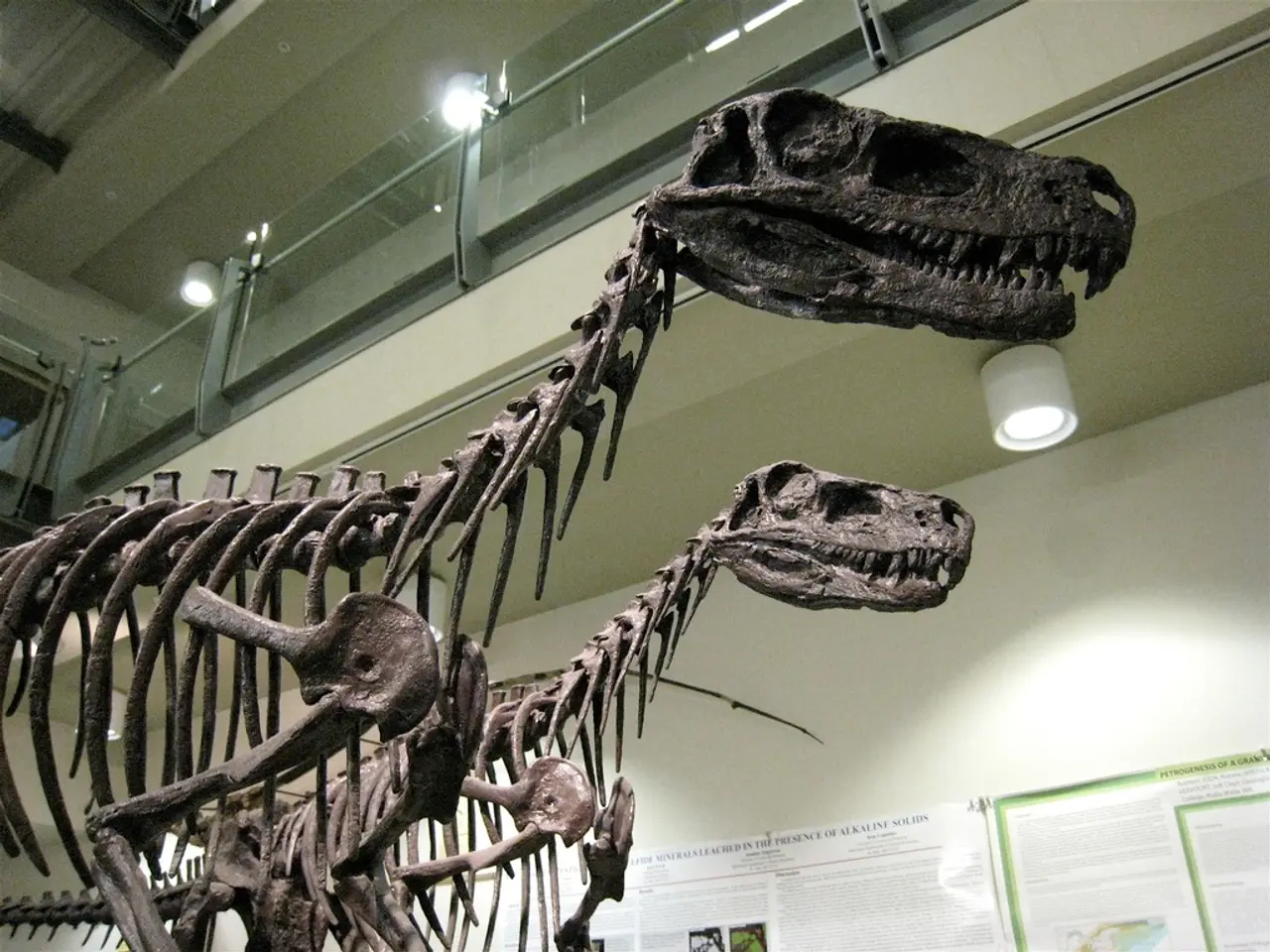Discovered beneath the ocean: A lost world dating back 140,000 years, teeming with colossal marine life and extinct human species, as uncovered by archaeologists.
In a groundbreaking discovery, researchers have unearthed Homo erectus fossils in the Madura Strait, located between Java and Madura in Indonesia. These fossils, dated between 162,000 and 119,000 years ago, represent the first hominin fossils found underwater in Southeast Asia, shedding light on a lost chapter in human evolution that had been buried beneath the ocean for millennia.
The discovery of these fossils confirms that the now-submerged Sundaland landmass, which connected much of Southeast Asia before being flooded due to rising sea levels around 14,000 to 7,000 years ago, was inhabited by early humans and large fauna. The fossils recovered from the seabed suggest that Sundaland was a thriving habitat during the Pleistocene epoch, home to a diverse range of species, including antelope-like creatures, Komodo dragons, buffalo, deer, and the extinct genus of elephant-like herbivores, Stegodon.
The analysis of the animal remains shows signs of butchery, suggesting that Homo erectus used tools to hunt large animals. This finding supports the idea that the region offered early humans ample opportunities to hunt and gather, making it an ideal habitat for human survival. The discovery of such ecosystems provides a new perspective on prehistoric landscapes and human migration routes in Southeast Asia.
The discovery of these Homo erectus fossils in the Madura Strait broadens our understanding of the geographical range of Homo erectus and demonstrates their adaptability to diverse environments. It also underscores the importance of submerged areas like the Madura Strait as untapped sources of ancient human and animal fossils, shedding light on the migratory patterns and behaviors of Pleistocene hominins in this part of the world.
This discovery complements the historical importance of Indonesian finds such as the Java Man, discovered by Eugene Dubois in the late 19th century, by adding deeper and underwater evidence which points to a more complex and extensive prehistoric human story in the region. The discovery of these Homo erectus fossils not only adds another layer to our understanding of how Homo erectus adapted to their environment but also reshapes scientific understanding of early human evolution and dispersal in Asia, encouraging future exploration of submerged archaeological sites.
References:
- University of Leiden. (2021, March 25). Homo erectus fossils found in Madura Strait, Indonesia. ScienceDaily. Retrieved April 10, 2021 from www.sciencedaily.com/releases/2021/03/210325111837.htm
- Pfeiffer, J. E., et al. (2021). Homo erectus from the Madura Strait, Indonesia. Nature, 593(7859), 273–277. doi:10.1038/s41586-021-03407-0
- Suhartoyo, A., et al. (2021). Early human occupation of the Madura Strait, Indonesia, during the Middle to Late Pleistocene. Quaternary International, 527, 54–69. doi:10.1016/j.quaint.2020.12.031
- Dubois, E. (1894). On the discovery of a skull of a new species of the genus Homo in Java. Journal of the Anthropological Institute of Great Britain and Ireland, 13, 277–296.
- Mourre, J. (2021). The discovery of Homo erectus fossils in the Madura Strait, Indonesia. Nature, 593(7859), 257–258. doi:10.1038/d41586-021-03404-3
- The submerged Sundaland landmass, where the Homo erectus fossils were found, could potentially be a treasure trove for environmental scientists, offering insights into the diversity of species that thrived during the Pleistocene epoch.
- This discovery in the Madura Strait could revolutionize technological approaches to archaeology, as scientists may now focus on submerged archaeological sites to uncover more information about Pleistocene hominins and their migration patterns.




